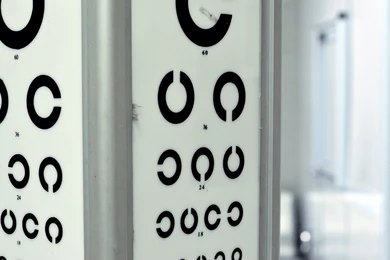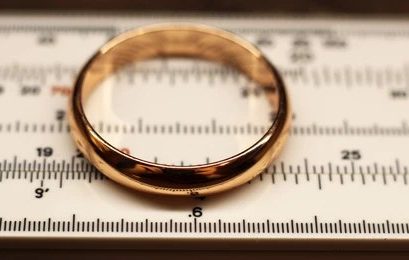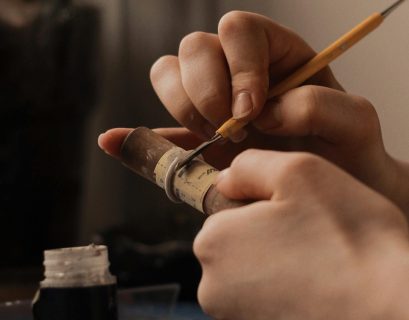Selecting a ring that fits flawlessly is no small feat, but a ring sizes chart simplifies the process. Whether you’re shopping for an engagement ring, a wedding band, or a statement piece, this indispensable guide helps ensure a perfect fit without stress. With a little know-how, you can confidently measure and find the right size, saving time and avoiding the hassle of resizing. Let’s explore how a ring sizes chart can transform your jewelry shopping experience.
What Makes a Ring Sizes Chart Essential?
A ring sizes chart is more than just a measurement tool—it’s your key to understanding how rings fit different hands and fingers. These charts provide standardized sizing that helps bridge the gap between personal measurements and the jeweler’s offerings. They display sizes based on:
- Circumference: The perimeter of your finger in millimeters, offering a precise measurement for an accurate fit.
- Inner Diameter: The distance across the interior of a ring, also measured in millimeters, used to match an existing ring’s size.
Additionally, many charts include international size conversions, making them invaluable for shoppers buying from global retailers. Whether you’re navigating US, UK, or European sizing systems, a comprehensive chart ensures you find the correct size no matter where you shop.
How to Use a Ring Sizes Chart for Accurate Results
- Measure Your Finger
- Wrap a string, strip of paper, or flexible measuring tape around your finger.
- Ensure the material is snug but not overly tight, as this will affect accuracy.
- Mark the point where it overlaps and measure the length in millimeters using a ruler.
- Check the Chart
- Match your finger’s circumference measurement to the sizes listed on the chart. This will reveal your corresponding ring size.
- Measure an Existing Ring
- If you have a ring that fits perfectly, measure its inner diameter using a ruler or caliper.
- Compare this diameter to the chart to confirm the size.
- Use Printable Charts
- Many jewelers offer printable ring sizes charts. Place an existing ring over the circles on the chart until it matches perfectly.
- Always ensure your print settings are set to 100% scale to maintain accuracy.
Factors That Can Affect Ring Sizing
Even with the best tools, certain factors can impact your measurements. Here’s what to consider:
- Temperature Fluctuations: Warm weather can cause fingers to swell, while colder temperatures may make them shrink. To get the most accurate measurement, size your finger at room temperature.
- Band Style: Wider rings tend to fit more snugly. If you’re purchasing a ring with a broad band, consider sizing up by half a size for added comfort.
- Knuckle Size: If you have larger knuckles, choose a size that slides over comfortably but still fits securely at the base of your finger.
- Time of Day: Fingers may swell slightly in the evening or after physical activity. Measure your finger at a time when it’s neither at its smallest nor its largest.
The Benefits of Using a Ring Sizes Chart
Using a ring sizes chart offers several advantages, particularly for online shopping:
- Saves Time: Avoid back-and-forth resizing by getting the size right on the first try.
- Simplifies International Shopping: With size conversion tables included, these charts eliminate confusion when buying from global retailers.
- Prevents Errors: By measuring correctly and cross-referencing with the chart, you minimize the risk of ordering the wrong size.
- Ensures Comfort: A properly sized ring enhances wearability, ensuring it feels secure without being too tight or loose.
When Professional Sizing Is Necessary
While a ring sizes chart is a reliable DIY method, certain scenarios call for professional sizing to ensure the most accurate results:
- Custom or Intricate Designs: Rings with unique settings, engravings, or unconventional materials may require precision beyond what a chart provides.
- Significant Milestones: For engagement or wedding rings, professional sizing ensures perfection for a piece that holds lifelong sentimental value.
- Uncertain Measurements: If your measurements don’t align perfectly with a chart or if your finger shape is unique (e.g., large knuckles with narrow bases), a jeweler can provide tailored advice.
Professional jewelers use specialized tools such as ring sizers and mandrels to measure your finger and adjust the fit to your preferences. This service is often included when purchasing a ring in-store.
Tips for a Flawless Ring Shopping Experience
- Measure Twice: Accuracy is key. Measure your finger multiple times and average the results for consistency.
- Consider Resizing Policies: When purchasing a ring, check the jeweler’s resizing policy. Many offer a free or discounted resizing service within a specific timeframe.
- Think About Longevity: Hands and fingers can change over time. If you’re unsure, choose a slightly adjustable style or a jeweler that allows resizing down the line.
Conclusion
A ring sizes chart is an indispensable tool for anyone looking to buy a ring that fits perfectly. By understanding how to measure accurately, considering factors like band width and finger shape, and utilizing the chart effectively, you can eliminate the guesswork from your shopping experience. Whether you’re buying an engagement ring, a wedding band, or a meaningful gift, a well-fitted ring ensures comfort, beauty, and a lasting impression. With a little preparation and the help of a reliable chart, you’re just steps away from finding a ring that’s as perfect as the occasion it represents.









